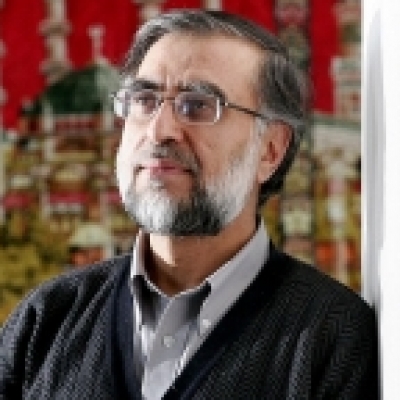



 Zafar Bangash
Zafar BangashThe Saudi assertion that only 343 pilgrims (pilgrims) died in Mina in the April 15 fire has been challenged by eyewitness accounts who put the death toll at nearly 4,000. More than 12,000 were injured, many of them in the stampede that followed as the fire spread.
The fire engulfed and destroyed 70,000 tents, according to a number of pilgrims who reported from the scene. The tragedy was compounded by Saudi callousness and incompetence. Both Indian and Pakistani pilgrims have reported that their tent compounds, surrounded by high fence, were locked by the Saudi guides to prevent people from escaping and starting a stampede.
Shahid Amin, Pakistan’s ambassador to Saudi Arabia, was quoted by the Karachi daily, the Dawn (April 28), that one Pakistani pilgrim, recovering in a Saudi hospital, confirmed the gate closure story to him. And Afzal Amanullah, the Indian consul general in Jeddah, told the Associated Press on April 22 that many deaths could have been prevented had the Saudi guides not locked the gates. Indian and Pakistani pilgrims suffered the most casualties although at least four Sudanese pilgrims also died.
Calamities and Hajj under the control of the House of Saud have become synonymous. But characteristically, the Saudi regime was more concerned with projecting its image than concentrating its resources on putting the fire out or identifying the dead. Ambassador Amin said that the Saudis had given him a list of 113 Pakistani dead but another 141 were missing. Of these 27 had been confirmed dead through Pakistani pilgrims’ own sources by April 27.
While many pilgrims were burnt beyond recognition, the world is not likely to learn about the exact number of dead. Here is why. A batallion of the Pakistan army deployed near Makkah was pressed into service to bury the dead. A senior Pakistan army officer expressed disgust at the manner in which the Saudis had treated the dead. He revealed that they were buried in mass graves outside Mina without proper Islamic burial rites.
The Saudis had other things on their mind. They were more concerned about preventing a few pilgrims slipping through the vast dragnet and disappearing in the kingdom. Saudi security forces established at least 15 checkpoints on roads out of Makkah to ensure that no pilgrims slipped away to Riyadh or elsewhere.
And king Fahd, the ageing and barely able to move self-styled ‘Servant of the Two Holy Places’, said on April 19 that the kingdom was committed to peace with Israel. Fahd’s obsession with peace with the zionists and war on Muslims is reflective of the Saudi family’s lifelong history in the service of the Zionists.
The blaze in Mina lasted more than three hours. Many pilgrims were crushed in the stampede as people fled the raging inferno. The Saudis alleged that strong winds spread the fire very quickly. While this is true, Saudi callousness and incompetence are also major contributory factors.
When the tragedy struck Mina, the Saudis gave conflicting casualty figures. First, it was announced that only 30 pilgrims had died. By the end of the day, it had increased to 50 and the figure gradually climbed to 217 with 1290 announced injured by the third day. How they came up with such precise figures, nobody knows. The Saudi health minister, Osama bin Abdul-Majid Shobokashi, announced on April 19 that of the 1537 who had been injured (remember, the previous injury figure was 1290) only 25 remained in hospital. The death toll, they insisted, was only 343.
Far from explaining why it took so long to put out the fire or why the dead had not been identified almost two weeks after the tragedy, the Saudis started their usual mantra about countries sticking to their quota. The Saudi minister for Hajj and Auqaf, Mahmoud bin Mohammad Safar, said Muslim countries should continue to adhere to the quota ‘which aims to safeguard the interests and safety of pilgrims.’
Would a strict adherence to the quota - quite an arbitrary one that stands in contradiction to the Qur’anic command (2:97) - have prevented the fire or lessened the number of casualties?
In 1990, at least 1,426 pilgrims were crushed to death in a tunnel, according to the Saudis’ own admission. Informed sources in the kingdom said that five times as many pilgrims died. Why? The Saudis have never accepted any responsibility for their own incompetence. The reason for that tragedy was that one end of the tunnel was suddenly closed by Saudi security personnel because the wife of a Saudi prince was passing-by.
Naturally, a royal wife is far more important than the lives of thousands of pilgrims. Or, consider the cold-blooded murder of 402 Iranian pilgrims - many of them women and the handicapped - on July 31, 1987 in Makkah at the hands of the Saudi army and guards. The troops were commanded by general Ulrich Wagner, a German Christian military officer, recruited specially for the purpose. It must be remembered that non-Muslims are not allowed within the boundaries of the Holy Cities and God has expressly forbidden violence therein.
The Saudis are guilty of gross violations of the commandments of the Qur’an. Is it any wonder then, that their rule has been marked by repeated calamities against innocent people?
In fact, the Saudi decision to go against the Qur’anic command about determining the day of Hajj (2:189) and forcing the pilgrims to go to Mina and Arafat on the seventh and eighth of the month of Zulhijjah when they should be in Arafat only on the ninth to complete their Hajj, is routinely and contemptuously violated.
Muslimedia - May 1-15, 1997
